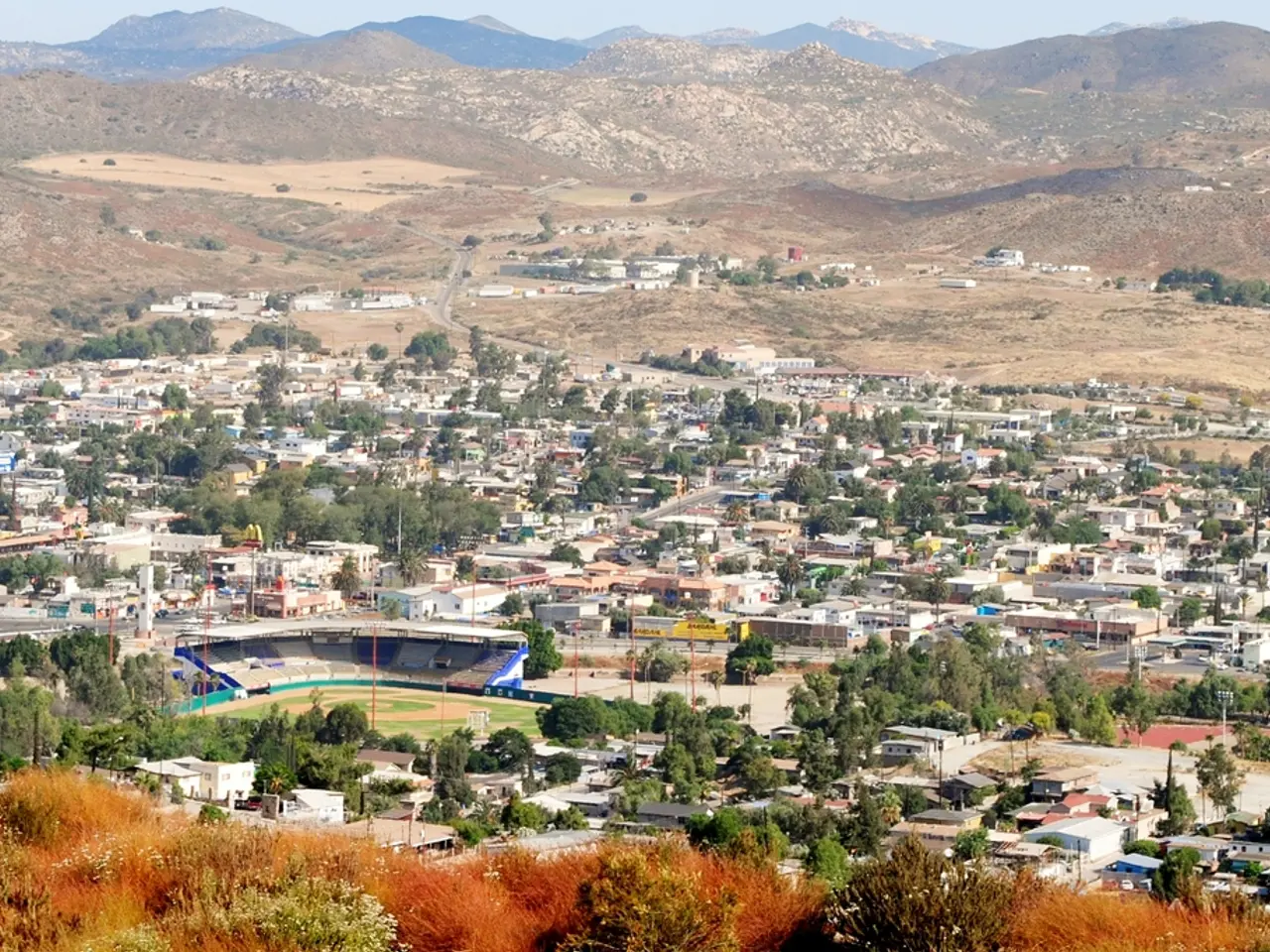Dramatic decreases in housing prices found in Culiacán, as a result of escalating violence
====================================================================
In the coastal Mexican state of Sinaloa, the real estate market is experiencing a unique blend of factors shaping its housing landscape.
Canadevi Querétaro, a national housing organisation, has announced plans to build low-cost housing in Sinaloa, aiming to address affordability concerns. This move could potentially ease the pressure on prices in the lower end of the market.
However, on the other hand, housing developers in Sinaloa have taken a different approach. In an effort to revive the real estate market, particularly in Culiacan, which has been affected by a sharp decline in activity due to violence, they have reduced the prices of their homes by up to 500,000 pesos, primarily focusing on residential properties with values above 4 million pesos.
The strategy does not necessarily mean that the property prices have dropped. Instead, it involves developers putting up promotions and down payments of up to 500,000 pesos on residential properties worth over 4 million, 4.5 million, or 5 million pesos. This strategy is aimed at attracting buyers to a market facing challenges due to insecurity and banks' caution in granting mortgage loans.
Banks in Sinaloa have tightened mortgage loan requirements, further complicating access to financing for buyers. Additionally, they have a "red flag" and are seeking to avoid an increase in non-performing loans. This cautious approach has contributed to the drop in real estate sales for housing developers in Sinaloa, with the drop reaching up to 70%.
Currently, only three homes out of every ten are being sold in Sinaloa. The situation in Culiacan has led to only apartments and houses between 1 and 1.5 million pesos maintaining some demand, while the rest of the market remains stagnant.
The financial sector in Sinaloa has been impacted by these developments, with Mazatlan, another city in the state, having over 100 real estate developments in process.
It's important to note that Sinaloa's real estate market is attractive due to its coastal locations and growth potential, including beachfront and urban living options that appeal to both domestic and international buyers or investors. This demand, especially in areas branded as safe and developing quickly, tends to push prices upward.
Mexico generally exhibits low property taxes and relatively easy rental processes, which can encourage investment. However, selling real estate can be slow if not well-priced, affecting how supply adjusts to demand changes.
Economic stability in Mexico, with low inflation and interest rates, supports real estate investment by maintaining affordable borrowing costs and economic confidence, which in turn fuels demand.
Broader Mexican cities like Mexico City face gentrification pressures causing rapidly rising housing costs, illustrating how demand pressures can exacerbate price increases in urban areas. While not Sinaloa-specific, this highlights a nationwide trend where growing urban demand can sharply affect prices.
Security concerns and socio-political issues, including narcotourism narratives affecting some regions, can also influence real estate demand and supply perceptions in parts of Mexico, potentially including Sinaloa, impacting prices indirectly.
In conclusion, in Sinaloa, demand driven by safety improvements, economic growth, and coastal attractiveness creates upward pressure on real estate prices, especially where supply is constrained or slow to adjust. The stable macroeconomic environment in Mexico further supports this trend. However, sales sluggishness and social-political factors can moderate how quickly prices rise or fall.
[1] Demand pressures in urban areas can sharply affect prices. [2] Gentrification pressures causing rapidly rising housing costs in broader Mexican cities. [3] Economic stability in Mexico supports real estate investment. [4] Security concerns and socio-political issues impacting real estate demand and supply perceptions. [5] Selling real estate can be slow if not well-priced, affecting how supply adjusts to demand changes.
- The demand pressures in urban areas across Mexico, such as Mexico City, can lead to a significant increase in housing costs due to gentrification.
- Economically, the stable environment in Mexico provides a favorable condition for real estate investment, contributing to the growth of demand due to affordable borrowing costs and economic confidence.
- Security concerns and socio-political issues, including narcotourism narratives in certain regions, can have an indirect impact on real estate demand and supply perceptions, potentially affecting prices.
- In the case of Sinaloa, the demand driven by safety improvements, economic growth, and coastal attractiveness creates upward pressure on real estate prices, especially where supply is limited or slow to adjust.
- If real estate is not priced competitively, it can cause sellers in Sinaloa to face a slow sales process, making it difficult for the supply to adapt to changes in demand.
- In broad terms, the financial industry in Sinaloa has been affected by the current state of the real estate market, with cities like Mazatlan having over 100 real estate developments in progress.
- Lastly, can conclude that, while the robust demand in certain regions of Mexico tends to push prices upward, factors such as political instability, caution in granting mortgage loans, and slow supply adjustment can moderate the pace of price increases or even lead to sluggish sales, as observed in Sinaloa.




